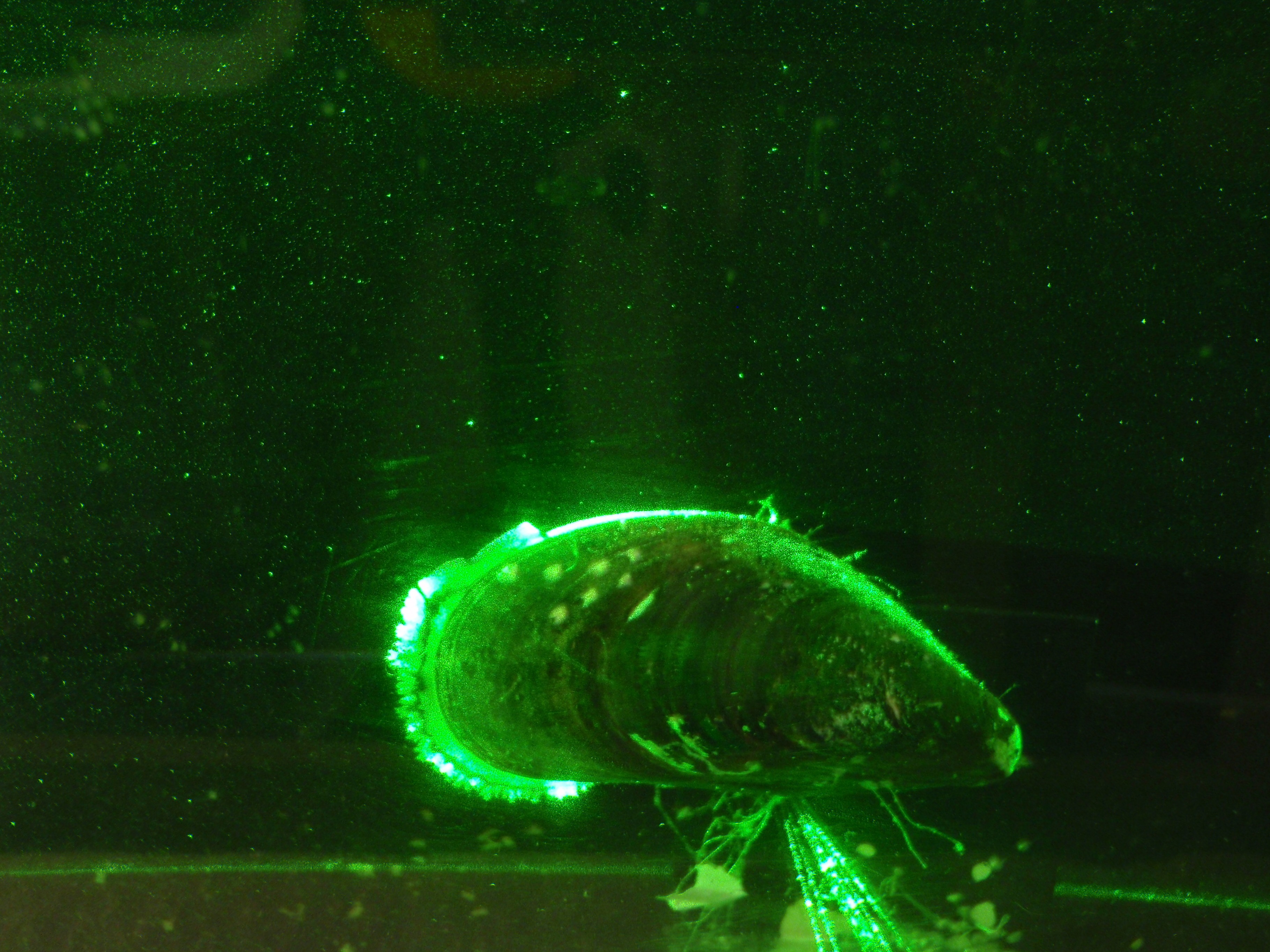Responsible
Head of Innovation Flemming Møhlenberg, DHI & Associate Professor Jens Honoré Walther, DTU
Aims
The overall aim of the research in WP3 is to develop easy-to-use tools that can aid planning and design of offshore mussel farms. The objectives and activities to achieve this are as follows:
- Develop concepts, methods and ultra-fine scale models for description of the flow around individual mussels and smaller clumps of mussels
- Develop methods and fine scale models for description of the flow around mussel growth lines and nets established in a farm under varying current and wave conditions
- Upscale ultra- and fine-scale models by parameterization of horizontal dispersion and mixing and implement refined mussel growth formulations (from WP2) in meso-scale models to be integrated seamless with coupled larger-scale hydrodynamic-ecological models
- Calibrate and verify mussel farm models using dedicated lab and field campaigns
Scientific personnel
- Head of Innovation Flemming Møhlenberg, DHI
- Head of Innovation Erik Damgaard Christensen, DHI
- Lars Yde, DHI
- Mads Joakim Birkeland, DHI
- Johannes Tophøj Rasmussen, DTU
- Francesca Storti, DTU (PhD-student: Sept 2009 - April 2010)
- Bo Hoffmann Jørgensen, DTU (Post Doc, April 2010 - April 2011)
- Associate Professor Jens Honoré Walther, DTU

Fig. 5. PIV experiments where a laser, a camera and computer software was used to estimate the velocity of the jet stream from the exhalent siphon of a blue mussel.
Past activities (Jan 2008 – Mar 2012)
- Meso-scale 2-dimensional models (1000 × 500 m) have been established to model current speed and transports of algae into a section of a mussel farm. Mussel growth lines (‘droppers’) are implemented as “piers” where the diameter and flow resistance can be varied by the user. Spatial resolution (grid cell sizes) has been varied between 1 m and 0.25 m. Mussel growth is implemented using a “simple” saturation-function between algal carbon concentration and net growth rate that further are scaled to shell length using an allometric function. Grazing loss of phytoplankton is implemented by multiplying growth rate by 3-4 assuming gross growth efficiency between 20 and 33%. The range in resistance and dispersion has been set using a rather comprehensive Norwegian data set (Strohmeier et al. 2005; raw data submitted), but neither current speed (< 5 cm/s) nor chl a (1-3 µg/l) are representative for the Great Belt.
- Through an external grant (€ 34.000) from the European Fisheries Fund) the current model set-up has been used in 2008 to predict the potential for mussel production near to three Danish fish farms. Although the model still needs to be improved (see above) we believe that even in its current state this tool is superior to most other tools in use.
- During winter and spring 2009 the 2-D model has been transferred to 3-D models allowing for modelling of mussel farms in stratified waters, characterized by 2-way flows, and depth gradients in flow speed and phytoplankton. Models have tested thoroughly for mass conservation and numerical stability, and at present the model tool appears robust.
- An external FTP project "Multiscale Simulations Using Particle Vortex Methods with Application to Bluff Body Flow" (FTP grant 274-08-0258) has allowed us to develop a large scale three-dimensional detailed model of the flow in complex geometries, including flows in biological systems. The goal of the FTP project is to study the aerodynamic stability of long suspension bridges, but we have used this opportunity to perform validation of the software on biological relevant flows - here the flow through a mussel (Fig 6).
- We have performed detailed measurements of the flow rate and the exhalent jet from mussels (Fig. 7). The measurements were conducted at the Marine Biological Research Center (SDU) in Kerteminde. The flow measurements have been used to provide boundary conditions for ultra-fine scale models. Preliminary simulations have been conducted and compare with the measurements, and the work has been published in Marine Ecology Progress Series.
- Azur Hodzic and Peter Johatan Jensen, bachelor students studied elliptic and triangular jets in a laboratory experiment at DTU MEK. Project finished in December 2011.
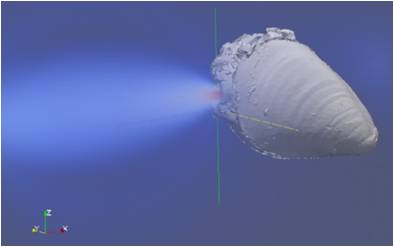
Fig. 6. Numerical simulation of the exhalant flow from a mussel. The simulations were performed using an in-house 3D vortex method code. The picture shows the flow speed. From report by Florian Willerval and Charles Thouny made during their visit to DTU MEK.
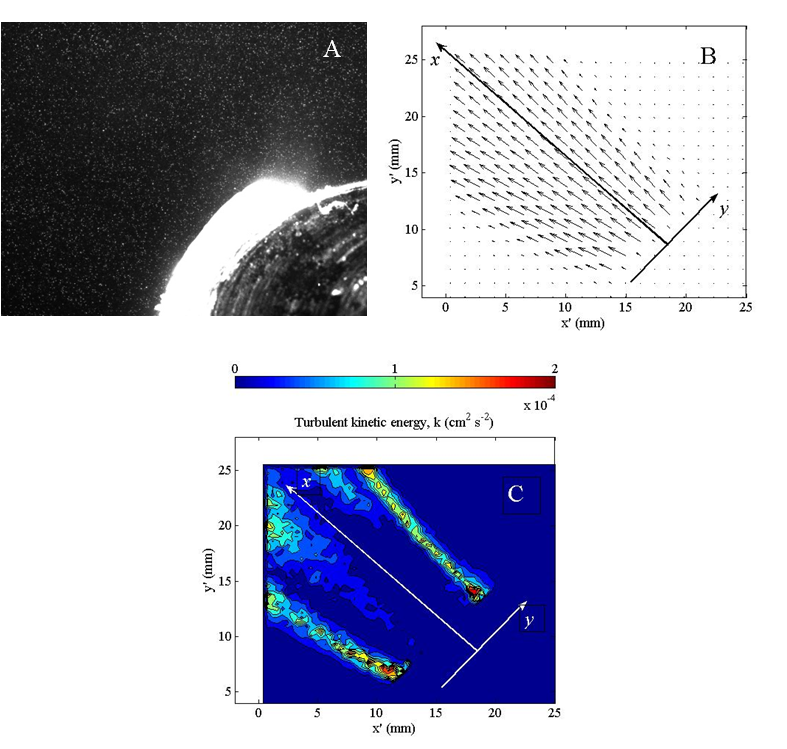
Fig. 7. Mytilus edulis. (A) PIV image of captured field showing seeding particles in the jet flow, the exhalant siphon and part of the shell to the lower right. (B) Averaged vector field of the exhalant jet. (C) Contour plot of turbulent kinetic energy showing jet spreading by shear layers.
Ongoing activities (Mar-Dec 2012)
Critical functions and elements in the meso-scale model are the magnitude of resistance of mussel ‘droppers’ (i.e. represented by ‘piers’ in the model), the associated dispersion (i.e. transport of algae from main stem flow to the pier grid cells) and the mussel growth function, especially 1) the minimum concentration that allows positive growth across different sized mussels, 2) contribution from non-algal particles such as proto- and mesozooplankton. The future activities will address these critical functions:
- Develop, test and apply a Lagrangian, Navier-Stokes equation solver based on the three-dimensional particle vortex method to describe the complex flow around individual mussels and around groups of mussels sitting on a growth rope.
- Upscale ultra-fine scale models to ‘fine scale’ models for description of the flow around mussel growth lines and nets by modelling the resistance from the mussels and lines as a moving porous medium (CFD).
- Incorporate process descriptions of flows from ultra-fine and fine scale models into farm-scale models by parameterizing dispersion and mixing functions.
- Incorporate refined mussel growth functions, quality and availability of food (studied and quantified in WP2) in the farm model
- Thorough test of mussel farm model during 2 dedicated 2-week field campaigns at the research- and demonstration mussel farm in the Great Belt (see below)
- Using bottom deployed ADCPs for quantifying depth gradients of flows inside and outside of mussel farm
- Sampling mussels along mussel farm and quantifying ingestion rate of algal pigments using the ‘defaecation method’ and using in situ fluorometers for upstream algal concentration
- Test and validate the mussel farm model based on long-term monitoring of abundance, biomass and growth rates of mussels at 8-10 fixed positions in the research- and demonstration mussel farm in the Great Belt (WP7).
- Validation and calibration of 3D mussel farm model
- Continue measurement on elliptic and triangular jets (ERASMUS student): duration: March 1st to June 1st 2012.
Publications
Scientific articles (peer reviewed)
Riisgård HU, Jørgensen BH, Lundgreen K, Storti F, Walther JH, Meyer KE, Larsen PS (2011). The exhalant jet of mussels (Mytilus edulis). Mar. Ecol. Prog. Ser. 437: 147-164
Reports
Thouny C. Willerval F. (2010). Numerical simulation of the exhalent jet flow from the blue mussel Mytilus edulis. (student report 12/17/2010). Technical University of Denmark.
Poulsen M (2009). (M.Sc. thesis; Dec. 2009). Undersøgelse af rentable muligheder for dyrkning og høst af muslinger dyrket off-shore: Et casestudie. University of Copenhagen.
Hodzic A, Jensen PJ (B.Sc. Thesis: Dec. 2011). Måling på model af strømningud af en musling. Technical University of Denmark.
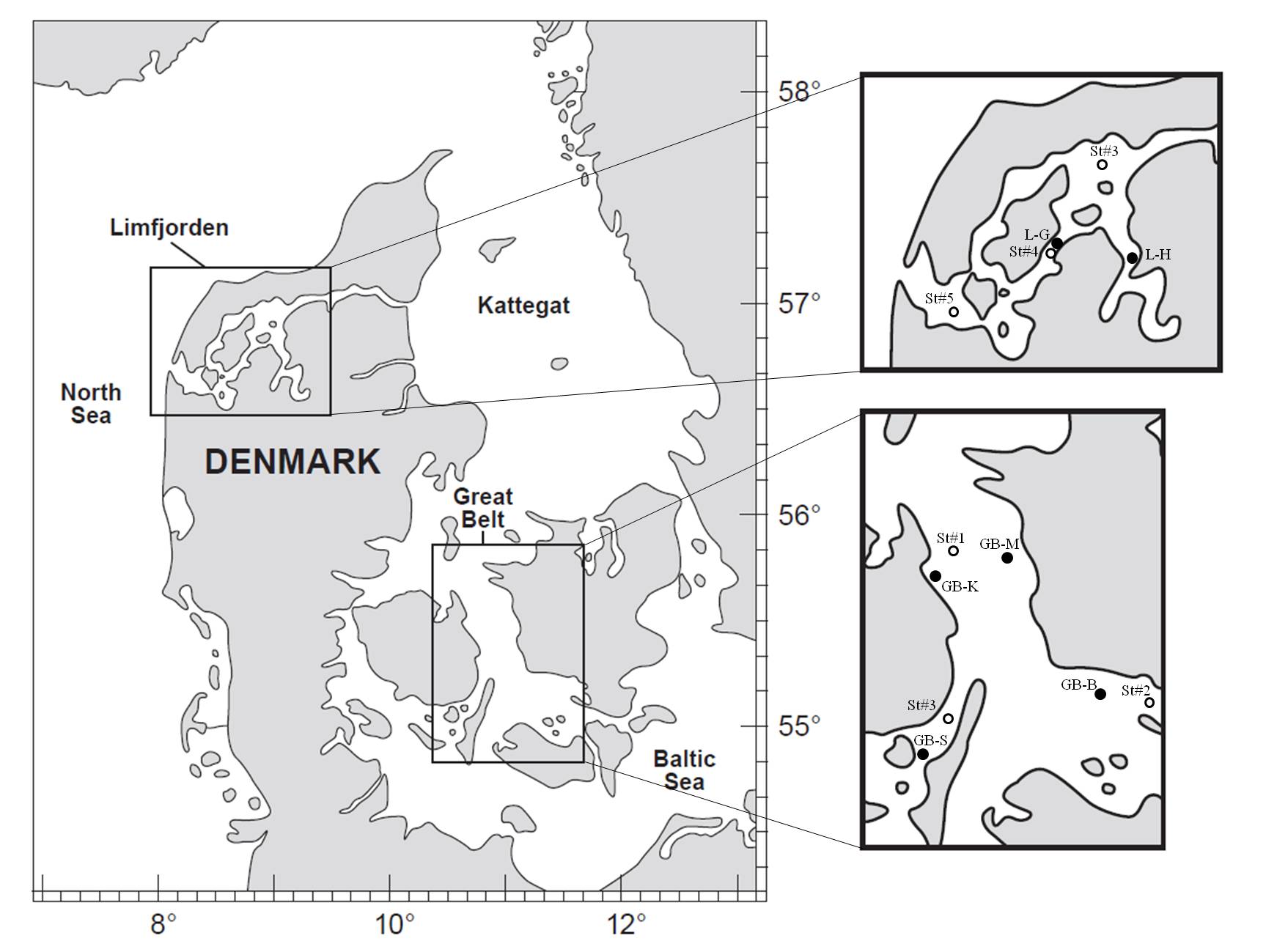
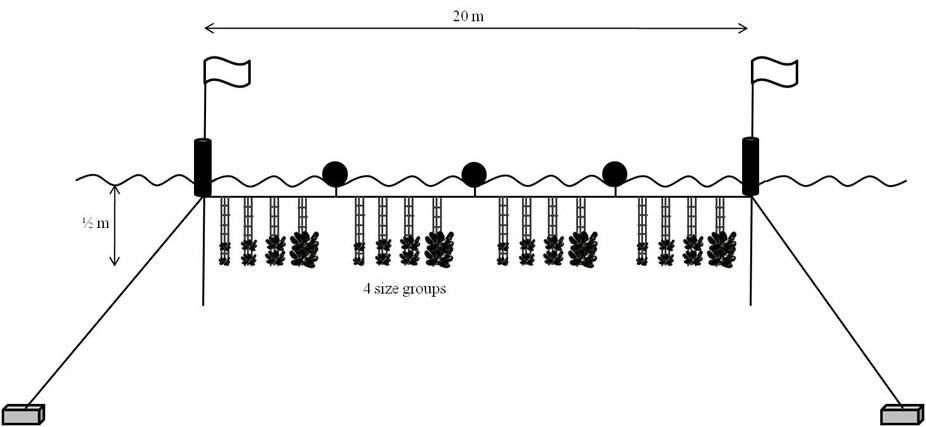
Fig. 8. Map of Denmark showing the locations for field growth experiments with Mytilus edulis hung up in net bags at different localities in Great Belt and in Limfjorden. Buoy-system with mussels in net-bags.

